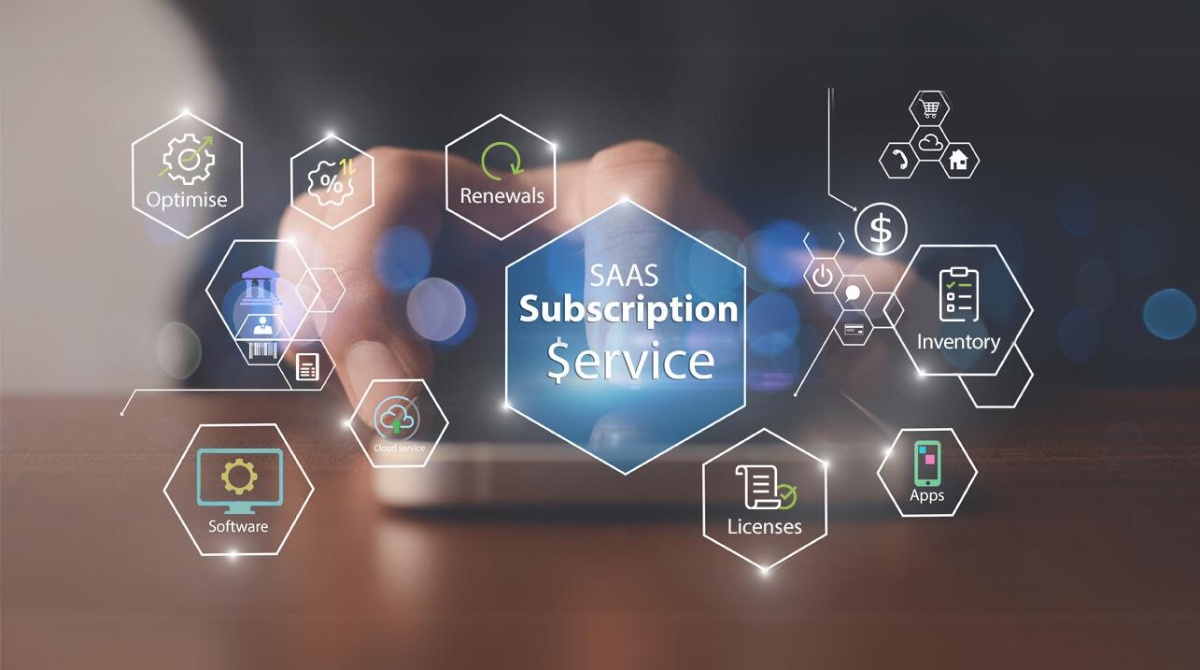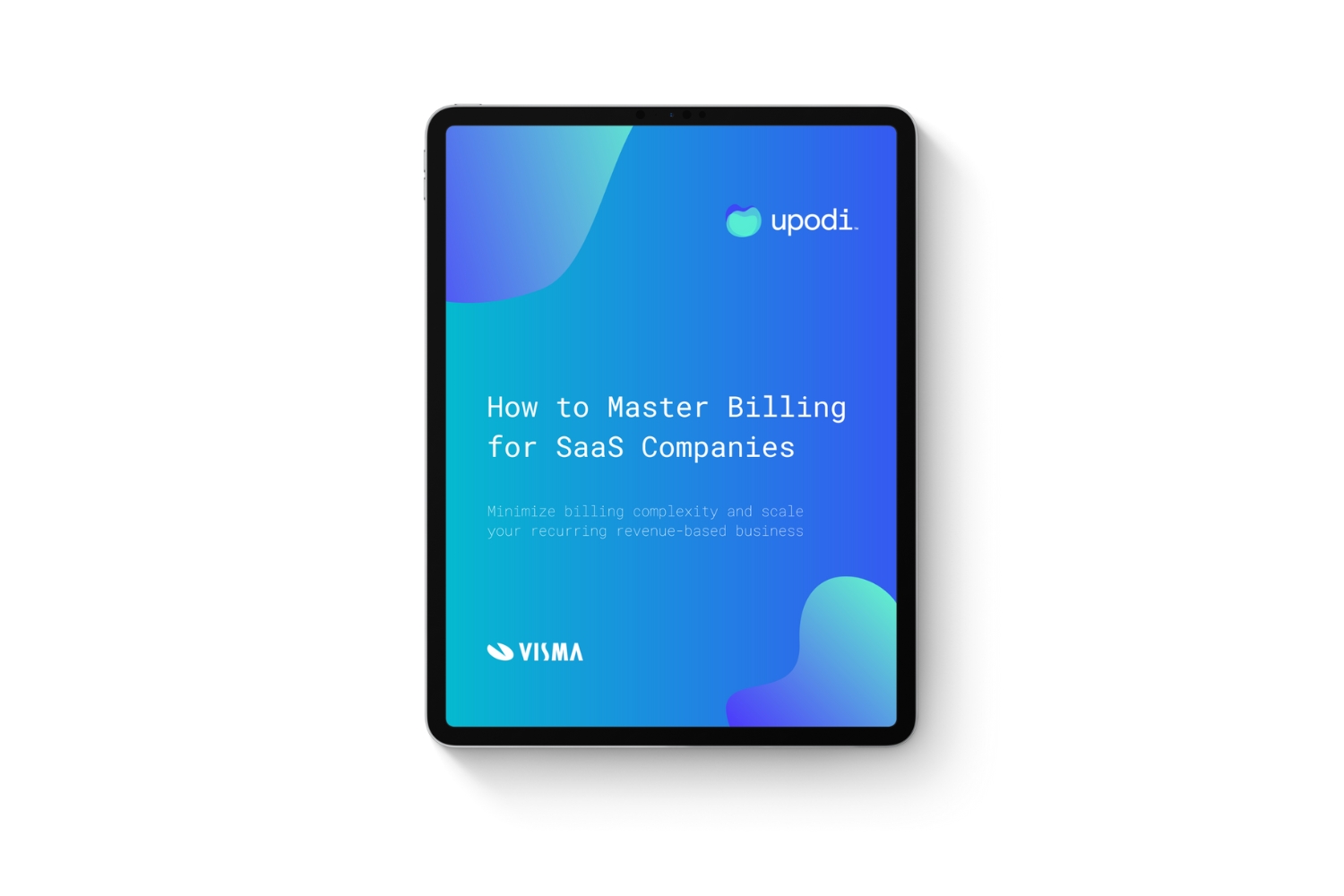Understanding SaaS Fees
Software as a Service (SaaS) has revolutionized the way businesses access and utilize software applications. With SaaS, companies can subscribe to software solutions hosted on the cloud, eliminating the need for costly infrastructure and maintenance. However, one of the key considerations for SaaS providers is determining the appropriate fees for their services. Understanding SaaS fees involves evaluating various factors to ensure pricing is competitive, profitable, and meets customer expectations.
There are several factors to consider when determining SaaS fees. First and foremost, it’s important to have a clear understanding of the market and the pricing landscape. This requires conducting thorough market research and gathering pricing intelligence on similar SaaS products. Analyzing competitor pricing will provide insights into market trends, pricing strategies, and customer preferences.
Identifying your target market is another crucial aspect of pricing SaaS fees. Different customer segments may have varying budgets, needs, and expectations. By understanding your target audience, you can tailor your pricing structure to align with their specific requirements and affordability.
Defining your value proposition is also essential in setting SaaS fees. What sets your product apart from the competition? How does it solve customer pain points and provide value? Articulating the unique benefits of your solution will help justify the pricing and convince customers of its worth.
Assessing costs and expenses is a fundamental step in determining SaaS fees. Consider the development, maintenance, and support costs associated with your SaaS product. Additionally, factor in any overhead costs, such as infrastructure, licenses, and customer acquisition expenses. By understanding the financial implications, you can set a pricing structure that ensures profitability while remaining competitive.
When considering the pricing model for your SaaS product, you have a few options to explore. Freemium, where you offer a basic version of your software for free with limited features, can attract a wide user base and upsell premium features. Alternatively, tiered pricing allows customers to choose from different pricing tiers based on their usage and needs. Assess the pros and cons of each model to determine which is most suitable for your target market and revenue goals.
Optimizing your pricing strategy is an ongoing process. It’s essential to conduct regular competitive analysis to monitor market trends and ensure your pricing remains competitive. Evaluate customer feedback, industry changes, and adjust your prices accordingly to maximize revenue and customer satisfaction.
Communicating value to customers through pricing is crucial. Clearly outline the features, benefits, and value customers will receive for their investment. Highlight any unique selling points and emphasize the return on investment they can expect by using your SaaS solution.
Regular pricing reviews are vital to ensure your fees remain aligned with your business goals and market conditions. As your product evolves and customer needs change, it may be necessary to adjust your pricing strategy to maintain competitiveness and profitability.
Understanding SaaS fees is a critical component of running a successful SaaS business. By thoroughly evaluating factors such as market research, target audience, value proposition, costs, and pricing models, you can set competitive and profitable SaaS fees that attract customers and drive growth.
Factors to Consider When Determining SaaS Fees
Determining the appropriate fees for your SaaS (Software as a Service) product requires careful consideration of various factors. By understanding these factors, you can set pricing that is competitive, profitable, and aligned with customer expectations. Here are some key factors to consider when determining SaaS fees:
1. Market Research: Conducting thorough market research is crucial to gain insights into the pricing landscape for similar SaaS products. Analyze competitor pricing, understand market trends, and gather pricing intelligence to inform your pricing strategy.
2. Target Audience: Identifying your target market is essential for pricing your SaaS product. Different customer segments may have varying budgets, needs, and expectations. Tailor your pricing structure to meet the specific requirements and affordability of your target audience.
3. Value Proposition: Define the unique value your SaaS solution provides to customers. Highlight how it solves their pain points, improves their operations, or delivers cost savings. The stronger and more compelling your value proposition, the more leverage you have in setting pricing that reflects the value you offer.
4. Costs and Expenses: Evaluate the costs associated with developing, maintaining, and supporting your SaaS product. Factor in overhead costs, such as infrastructure, licenses, and customer acquisition expenses. Understanding your costs will help you set pricing that ensures profitability while remaining competitive.
5. Pricing Models: Consider different pricing models, such as freemium or tiered pricing, to determine the most suitable approach for your SaaS product. Freemium offers a basic version for free with the option to upgrade, while tiered pricing allows customers to choose from different pricing tiers based on their usage and needs.
6. Competitive Analysis: Regularly monitor the pricing strategies of your competitors. Stay updated on their pricing changes, packaging, and promotions. This will help you remain competitive and adjust your own pricing strategy accordingly.
7. Customer Feedback: Pay attention to feedback from your customers. Understand their perception of the value you provide and their willingness to pay for your SaaS solution. Solicit feedback on pricing during customer interactions to gauge if adjustments are necessary.
8. Revenue Goals: Align your pricing strategy with your revenue goals. Determine how much revenue you need to generate to cover costs and achieve profitability. Consider factors like customer acquisition targets, growth projections, and long-term sustainability.
9. Pricing Flexibility: Consider offering pricing flexibility to cater to the diverse needs of your customers. This could include offering different payment plans, discounts for annual subscriptions, or the ability to customize packages based on specific requirements.
10. Value Communication: Communicate the value your SaaS product delivers to customers through pricing. Clearly outline the features, benefits, and return on investment they can expect. Emphasize how your pricing aligns with the value they will receive from using your solution.
By considering these factors when determining SaaS fees, you can set a pricing structure that is competitive, profitable, and enhances customer satisfaction. Regularly evaluate your pricing strategy to ensure it remains aligned with market conditions and supports your business goals.
Market Research: Pricing Intelligence
When determining SaaS fees, conducting thorough market research is essential. Market research provides valuable insights into the pricing landscape for similar SaaS products and helps you make informed decisions about pricing your own offering. One key aspect of market research is gathering pricing intelligence, which involves analyzing and understanding the pricing strategies of your competitors.
By gathering pricing intelligence, you can gain a deeper understanding of how your competitors price their SaaS solutions. This valuable information allows you to make strategic pricing decisions that give you a competitive edge. Here are some key considerations when conducting market research for pricing intelligence:
1. Competitive Analysis: Start by identifying your direct competitors in the SaaS market. Analyze their pricing structures, including the types of plans they offer and the features included in each plan. Look for patterns or trends in their pricing strategies, such as whether they use freemium models, tiered pricing, or value-based pricing.
2. Pricing Models: Pay close attention to the pricing models used by your competitors. Understanding how they structure their pricing can provide insights into what pricing models are most effective in the market. Evaluate the pros and cons of each pricing model and consider how they align with your own business goals and target audience.
3. Feature Comparison: Compare the features and functionalities offered by your competitors at different price points. Identify the unique value proposition and differentiate yourself by offering features or capabilities that are not already provided by your competitors. This will help you justify your pricing and stand out in the market.
4. Packaging and Upselling: Examine how your competitors package their products and services. Look for opportunities to offer add-ons or premium features that can be upsold to increase the average revenue per user. Consider whether your pricing structure allows for flexibility in upselling or if adjustments are needed to capture additional revenue streams.
5. Pricing Adjustments: Monitor pricing changes made by your competitors over time. Note any trends or patterns in their pricing adjustments and evaluate the reasons behind those changes. Assess whether you need to make similar adjustments to stay competitive or to differentiate yourself in the market.
6. Customer Perceptions: Seek feedback from your target audience regarding competitor pricing. Engage in conversations with your potential customers to understand their perception of the value offered by your competitors at different price points. This feedback can help refine your own pricing strategy and ensure it resonates with your target market.
7. Pricing Differentiators: Identify and leverage your unique selling points and differentiators. Analyze how your product stacks up against competitors in terms of features, quality, customer support, and overall value. Use these differentiators as a basis for justifying your pricing and highlighting the added benefits customers will receive by choosing your SaaS solution.
8. Pricing Agility: Remember that pricing is not a one-time decision. Market conditions change, new competitors enter the market, and customer needs evolve. Regularly review and adjust your pricing strategy to stay responsive to market dynamics and ensure your fees remain competitive.
By conducting thorough market research and gathering pricing intelligence, you can position your SaaS product effectively in the market. Understanding your competitors’ pricing strategies and customer perceptions will enable you to make informed decisions about your own pricing structure, ensuring that it remains competitive and aligns with your target audience’s expectations.
Identifying Your Target Market
Identifying and understanding your target market is a crucial step in determining the right SaaS fees for your product. The target market represents the specific group of customers who are most likely to benefit from and be interested in your SaaS solution. By identifying your target market, you can tailor your pricing strategy to meet their unique needs and align with their budgetary constraints. Here are some key considerations for identifying your target market:
1. Customer Segmentation: Begin by segmenting your potential customers based on relevant criteria such as industry, company size, geographic location, and specific pain points or challenges they face. This segmentation will help you narrow down and focus your marketing efforts and pricing strategies on the most promising customer segments.
2. Demographic Data: Collect and analyze demographic data of your target market, including age, gender, income level, and educational background. This information will provide insights into the preferences and buying behaviors of your target audience.
3. Psychographic Factors: Consider the psychographic factors of your target market, such as attitudes, interests, values, and lifestyle choices. Understanding these factors will help you create targeted marketing messages and pricing strategies that resonate with your customers on a deeper level.
4. Competitor Analysis: Study your competitors to gain insights into their target market. Analyze the types of customers they attract and evaluate their positioning strategies. Identify any gaps in the market that you can capitalize on to differentiate yourself and attract a unique segment of customers.
5. Customer Feedback: Engage with your potential customers and gather feedback to better understand their needs, pain points, and priorities. Conduct surveys, participate in industry events, and leverage social media platforms to engage in conversations with your target market. This feedback will inform your pricing decisions and help you fine-tune your offering to meet their expectations.
6. Market Trends: Stay up-to-date with market trends and industry developments that may impact your target market. Stay informed about emerging technologies, regulatory changes, and shifts in customer behavior. Understanding these trends will help you to adjust your pricing strategy and stay competitive.
7. Budget Considerations: Evaluate your target market’s budget constraints and spending capacity. Determine whether your pricing aligns with the value your SaaS solution provides and if it is within the acceptable budget range for your target customers. Consider offering pricing options that accommodate different budgets to attract a wider customer base.
8. Customer Acquisition Costs: Assess the costs associated with acquiring customers within your target market. Consider the marketing and sales efforts required to reach your target customers and factor in these costs when determining your SaaS fees. Understanding customer acquisition costs will help you ensure that your pricing aligns with your business objectives and profitability goals.
9. Customer Lifetime Value: Understand the potential lifetime value of your customers within your target market. Consider factors such as customer retention rates, upselling opportunities, and potential referrals. This will help you determine the maximum allowable acquisition cost and inform your pricing decisions.
By carefully identifying your target market and understanding their characteristics and needs, you can develop pricing strategies that resonate with your prospective customers. This targeted approach will help you attract the right customers, enhance customer satisfaction, and drive profitability for your SaaS business.
Defining Your Value Proposition
Defining a strong value proposition is a crucial step in determining SaaS fees. Your value proposition communicates the unique benefits and value that your SaaS solution offers to customers. It showcases how your product solves their pain points, improves their operations, or delivers cost savings. By clearly defining your value proposition, you can justify your pricing and differentiate your offering in the market. Here are some key considerations when defining your value proposition:
1. Customer Needs: Start by understanding the specific needs and challenges of your target market. What are the pain points your customers are facing? What are their goals and objectives? Align your value proposition with these needs to demonstrate how your SaaS solution addresses their pain points and helps them achieve their goals.
2. Unique Features: Identify the unique features and functionalities of your SaaS product that set it apart from competitors. Determine how these features provide value to your customers and address their pain points more effectively than other solutions in the market. Highlight these unique features in your value proposition to showcase the advantage of choosing your SaaS product.
3. Differentiation: Understand your competitive landscape and find ways to differentiate yourself from competitors. Analyze what makes your SaaS offering stand out – it could be your technology, customer support, ease of use, or integrations. Emphasize these differentiators in your value proposition to show customers why they should choose your product over alternatives.
4. Financial Benefits: Quantify the financial benefits that your SaaS solution provides to customers. Demonstrate how your product can save them money, increase revenue, or reduce operational costs. Use real data and case studies to support these claims and show the potential return on investment that customers can expect.
5. Time-Saving: Highlight the time-saving benefits of your SaaS solution. Show how it streamlines processes, automates tasks, and improves efficiency. Time is a valuable resource for businesses, and your value proposition should clearly articulate how your product saves time and enables customers to focus on other strategic activities.
6. Customer Success Stories: Leverage customer success stories and testimonials to reinforce your value proposition. Share real-life examples of how your SaaS solution has helped businesses overcome challenges and achieve their goals. These stories provide social proof and demonstrate the tangible benefits of utilizing your product.
7. Expertise and Support: Highlight your expertise and the level of support you provide to customers. Position your company as a trusted partner that understands their industry and can guide them through their journey. Show how your ongoing support and expertise add value and differentiate your offering in the market.
8. Competitive Pricing: Consider pricing as part of your value proposition. If your pricing is competitive or offers unique advantages such as flexible options or transparent costs, emphasize this in your value proposition. Show customers that they are getting a great deal along with the benefits and value your product delivers.
9. Constant Innovation: Communicate your commitment to continuous improvement and innovation. Highlight any product updates, new features, or roadmap enhancements that will provide added value to customers in the future. This demonstrates that your SaaS solution is not only valuable now but will continue to evolve to meet their evolving needs.
10. Clear Messaging: Craft clear and concise messaging to effectively communicate your value proposition. Use language that is easy to understand and focuses on the benefits and outcomes customers can expect. Avoid technical jargon and keep the messaging customer-centric, addressing their pain points and aspirations.
Defining your value proposition is crucial for setting appropriate SaaS fees. By understanding the needs of your target market, highlighting unique features, demonstrating competitive advantages, and conveying the financial and operational benefits, you can clearly communicate the value your SaaS solution offers. A strong value proposition will not only justify your pricing but also differentiate your product and attract customers in a competitive market.
Assessing Costs and Expenses
When determining SaaS fees, it is essential to assess your costs and expenses to ensure that your pricing strategy is both profitable and competitive. By understanding the financial implications of running your SaaS business, you can set fees that cover your costs while providing value to your customers. Here are some key considerations when assessing costs and expenses:
1. Development Costs: Evaluate the costs associated with developing your SaaS product. This includes expenses related to software engineering, design, user interface, and user experience. Consider the resources and time invested in building and testing your product.
2. Maintenance Costs: Determine the ongoing maintenance costs required to keep your SaaS product running smoothly and up to date. This includes server costs, software updates, bug fixes, and security measures. Consider the time and resources required to address customer support and troubleshooting.
3. Infrastructure Costs: Assess the expenses related to hosting your SaaS solution on cloud servers or data centers. Consider the costs of server space, bandwidth, and any additional infrastructure required to provide a reliable and scalable service to your customers.
4. Licensing and Third-Party Costs: Determine any licensing fees or costs associated with using third-party tools, libraries, or APIs in your SaaS product. Consider any ongoing fees, usage-based pricing structures, or revenue sharing arrangements that may impact your costs.
5. Customer Acquisition Costs: Analyze the expenses related to acquiring new customers. This includes marketing and advertising costs, sales commissions, lead generation expenses, and any other activities aimed at attracting and converting potential customers into paying subscribers.
6. Customer Support Costs: Consider the costs associated with providing effective customer support. This includes the salaries or fees for customer support staff, the tools and technology used for support, and any outsourced services or subscription fees for customer support platforms.
7. Overhead Costs: Evaluate any general overhead costs that are not directly tied to the production or delivery of your SaaS product. This may include office rent, utilities, legal fees, accounting services, and other administrative expenses.
8. Scalability and Growth Costs: Anticipate the costs associated with scaling your SaaS product and supporting growth. Consider the additional resources, infrastructure, and staffing required as your customer base expands. Ensure that your pricing strategy allows for future scalability without compromising profitability.
9. Competitor Analysis: Research and analyze the pricing strategies of your competitors to gain insights into industry norms and standards. Understand how your costs compare to those of your competitors and adjust your pricing accordingly to remain competitive in the market.
10. Profitability Goals: Set clear profitability goals for your SaaS business. Understand the level of revenue and profit margin you need to achieve to sustain and grow your business. Ensure that your pricing strategy aligns with these goals and allows for a healthy profit margin.
By carefully assessing your costs and expenses, you can set appropriate SaaS fees that cover your expenses, ensure profitability, and deliver value to your customers. Regularly review your costs to identify areas for optimization and efficiency improvements, allowing you to adjust your pricing strategy as needed to stay competitive in the market.
Pricing Model: Freemium vs. Tiered Pricing
When determining SaaS fees, choosing the right pricing model is crucial. Two popular pricing models for SaaS products are freemium and tiered pricing. Each model has its advantages and suitability for different business scenarios. By understanding the characteristics and benefits of these pricing models, you can make an informed decision that aligns with your target market and revenue goals. Here’s a closer look at freemium and tiered pricing:
Freemium Pricing:
In the freemium pricing model, you offer a basic version of your SaaS product for free, typically with limited features or capabilities. This allows potential customers to get a feel for your product and experience its value before committing to a paid subscription. Here are some key considerations for freemium pricing:
1. User Acquisition: Freemium can help attract a wider user base since there is no initial cost. By allowing users to explore some functionality for free, you can increase user adoption and acquire a large pool of potential customers.
2. Upselling Opportunities: The goal of the freemium model is to convert free users into paid customers by enticing them with additional features or advanced functionalities available only in the paid versions. This provides upselling opportunities that can increase the average revenue per user.
3. Brand Awareness: Offering a free version of your SaaS product can generate brand awareness and word-of-mouth marketing. Users who find value in your free product are likely to recommend it to others, helping expand your customer base.
4. Limited Revenue from Free Users: While freemium can attract a large user base, the challenge lies in converting those users into paying customers. This means that revenue generation from free users may be limited, and the focus should be on optimizing conversion rates to paid subscriptions.
Tiered Pricing:
In the tiered pricing model, you offer different pricing tiers with increasing levels of features and capabilities. Customers can choose the tier that suits their specific needs and budget. Here are some key considerations for tiered pricing:
1. Catering to Diverse Customer Needs: Tiered pricing provides flexibility to cater to customers with different budgets and requirements. By offering multiple pricing tiers, you can address the varying needs of your target market and capture a wider range of customers.
2. Upselling and Expanding Revenue: With tiered pricing, customers have the option to upgrade to higher tiers as their needs grow or as they require access to more advanced features. This creates upselling opportunities and allows you to generate additional revenue as customers upgrade their subscriptions.
3. Clear Value Differentiation: Each pricing tier should offer distinct value and advantages. Clearly communicate the features and benefits included in each tier to help customers understand the value they receive at different price points. This will aid them in selecting the tier that best suits their needs.
4. Simplicity and Ease of Comparison: With clearly defined pricing tiers and feature differentiations, customers can easily compare options and make informed decisions. This reduces confusion and helps customers choose the most suitable pricing tier.
Considerations for Choosing the Right Model:
When deciding between freemium and tiered pricing, consider factors such as your target market, customer acquisition goals, product complexity, and revenue objectives. Evaluate whether a freemium model will help drive user adoption and lead to paid conversions or if a tiered pricing structure will better cater to a diverse customer base and provide upselling opportunities.
Ultimately, a combination of both models may also be viable, depending on your specific business requirements and market dynamics. Your pricing strategy should be flexible and open to adjustments as you gather feedback and insights from customers and monitor the effectiveness of your chosen pricing model.
By carefully assessing the advantages and considerations of both freemium and tiered pricing, you can select the pricing model that best aligns with your SaaS offering and supports your business goals.
Optimizing Pricing Strategies
Optimizing your pricing strategy is crucial to maximize the revenue potential of your SaaS product while ensuring customer satisfaction and competitive positioning. By continuously evaluating and refining your pricing approach, you can find the right balance between profitability and affordability for your target market. Here are some key considerations for optimizing your pricing strategies:
1. Regular Pricing Reviews: Conduct regular reviews of your pricing strategy to ensure its effectiveness. Consider factors such as market trends, changes in customer needs, and competitive landscape. Regularly assess and adjust your pricing to remain competitive and maximize revenue generation.
2. Testing and Experimentation: Experiment with different pricing structures, tiers, or packaging options. A/B test different pricing strategies with a subset of your target audience to evaluate their response and gather valuable insights. Use data-driven approaches to identify pricing models that resonate best with your customers.
3. Utilize Data and Analytics: Leverage data and analytics to gain insights into customer behavior and preferences. Use customer data to understand pricing sensitivities, usage patterns, and willingness to pay. Analyze this data to make informed decisions about pricing adjustments and opportunities for upselling or cross-selling.
4. Value-Based Pricing: Consider implementing a value-based pricing approach that aligns pricing with the value your SaaS solution provides to customers. Understand the economic impact and tangible benefits customers gain from using your product. Price accordingly based on the perceived value to capture a fair share of that value.
5. Price Discrimination: Explore the possibility of price discrimination by offering different pricing options for different customer segments. This allows you to cater to customers with varying budgets, needs, or willingness to pay. Tailoring pricing to specific segments can optimize revenue generation.
6. Bundle and Packaging: Consider bundling complementary products or services together to offer higher-value packages. Packaging options can provide customers with a sense of added value while increasing the average revenue per user. Evaluate the pricing elasticity and customer preferences to determine the most attractive packaging options.
7. Loyalty and Incentives: Implement loyalty programs or incentives to encourage retention and upselling. Reward long-term customers or those who refer new customers with discounts or additional features. These incentives can increase customer loyalty and drive revenue growth.
8. Monitor Customer Feedback: Regularly solicit feedback from your customers regarding your pricing structure and value proposition. Actively listen to customer concerns, suggestions, and expectations. Understand their perception of the value they receive and make necessary adjustments to address any pain points or gaps.
9. Competitive Analysis: Continuously monitor and analyze your competitors’ pricing strategies. Stay updated on their pricing changes, promotions, and packaging options. Assess how your pricing compares to theirs and make adjustments to remain competitive without undervaluing your own offering.
10. Pricing Transparency: Ensure that your pricing is clear, transparent, and easy for customers to understand. Avoid hidden fees or complex pricing structures that can cause confusion or create negative experiences. Build trust by being transparent about your pricing and any changes made to it.
Optimizing your pricing strategies requires a data-driven and customer-centric approach. Regularly review and fine-tune your pricing based on market dynamics, customer feedback, and competitive analysis. By continually refining your pricing approach, you can find the optimal balance that maximizes revenue, meets customer expectations, and drives long-term business growth.
Conducting Competitive Analysis
Conducting competitive analysis is a crucial step in determining the right pricing strategy for your SaaS product. By thoroughly assessing your competitors’ pricing, packaging, and value propositions, you can gain valuable insights that will inform your pricing decisions and help you position your offering effectively in the market. Here are some key considerations when conducting competitive analysis:
1. Identify Competitors: Start by identifying your direct and indirect competitors in the SaaS market. Direct competitors offer similar SaaS solutions targeting the same customer segment, while indirect competitors provide alternative solutions that address similar customer needs.
2. Analyze Pricing Models: Evaluate the pricing models and structures used by your competitors. Understand whether they adopt freemium, tiered pricing, value-based pricing, or any other pricing strategy. Analyze the pros and cons of each model and assess how they align with your own business goals and target market.
3. Pricing Tiers and Features: Examine the pricing tiers offered by your competitors and the features included in each tier. Take note of how they differentiate their pricing based on the value and functionality delivered at different price points. Identify any gaps or opportunities that you can leverage to attract customers.
4. Packaging and Bundling: Evaluate the packaging and bundling options offered by your competitors. Assess how they combine various features or modules to create higher-value packages. Identify any unique or innovative packaging strategies that can differentiate your offering.
5. Pricing Adjustments: Monitor pricing changes made by your competitors over time. Observe any patterns or trends in their pricing adjustments and analyze the reasons behind those changes. Assess the impact of these adjustments on customer perception and market positioning.
6. Value Proposition Differentiation: Understand how your competitors position and differentiate their value propositions. Analyze their unique selling points, customer testimonials, and case studies to determine how they communicate the value they offer. Assess how your own value proposition compares and identify areas where you can emphasize your strengths.
7. Market Perception: Gauge market perception by analyzing customer reviews, ratings, and feedback about your competitors. Look for common themes, strengths, and weaknesses mentioned by customers. Identify opportunities where you can outperform your competitors in terms of customer satisfaction and value delivery.
8. Pricing Strategies: Evaluate the overall pricing strategies adopted by your competitors. Look for patterns, common pricing tactics, and promotions they use. Assess the elasticity of their pricing and identify any gaps or areas where you can differentiate your pricing approach.
9. Pricing Transparency: Assess the level of pricing transparency and clarity demonstrated by your competitors. Analyze the information they provide on their websites, in marketing materials, and during the purchasing process. Determine if there are any opportunities to enhance your own pricing transparency and build trust with customers.
10. Benchmarking and Adjustments: Benchmark your pricing against your competitors to understand where you stand in terms of pricing competitiveness. Use this information to make informed pricing adjustments that help you gain market share, attract customers, and position your SaaS product effectively.
Conducting competitive analysis provides valuable insights into pricing strategies, packaging options, and value propositions adopted by your competitors. This analysis helps you understand market dynamics, identify opportunities for differentiation, and make informed decisions about your own pricing strategy. By continuously monitoring and analyzing your competitors, you can stay competitive, adapt to market changes, and refine your pricing approach to drive success in the SaaS market.
The Importance of Regular Pricing Reviews
Regular pricing reviews are essential for SaaS businesses to ensure their pricing strategy remains effective and aligned with market conditions, customer expectations, and business goals. By conducting regular pricing reviews, you can optimize your pricing approach, maximize revenue, and maintain a competitive edge. Here are some key reasons why regular pricing reviews are important:
1. Market Dynamics: Markets are constantly evolving, and customer preferences, needs, and expectations can change over time. Regular pricing reviews allow you to stay informed about market dynamics and adjust your pricing strategy accordingly. This helps you remain competitive and responsive to customer demands.
2. Pricing Competitiveness: By regularly evaluating your pricing vis-à-vis your competitors, you can ensure that your fees are competitive. This enables you to attract and retain customers, particularly in a saturated market where pricing plays a significant role in customer decision-making.
3. Maximizing Revenue: Pricing reviews help you identify opportunities to optimize revenue and profitability. By evaluating customer buying behavior, willingness to pay, and pricing elasticity, you can adjust your pricing tiers, features, and packaging to maximize the value customers receive while increasing your average revenue per user.
4. Product Enhancements and Innovation: As your SaaS product evolves and incorporates new features or functionalities, regular pricing reviews enable you to re-evaluate your pricing. This ensures that the value you offer through product enhancements is appropriately reflected in your fees, providing a fair return on investment for both you and your customers.
5. Customer Feedback: Regular pricing reviews provide opportunities to gather customer feedback specific to your pricing. Engaging with customers and understanding their perspectives on value and pricing can guide pricing adjustments and enhancements. This customer-centric approach helps build customer loyalty and satisfaction.
6. Pricing Strategy Optimization: Through pricing reviews, you can evaluate the effectiveness of your pricing strategy and identify areas for optimization. This includes conducting pricing experiments, testing different pricing models, adjusting pricing tiers, and exploring innovative pricing approaches that align with customer preferences and market trends.
7. Cost and Profitability Assessment: Pricing reviews allow you to assess your costs, expenses, and profitability objectives. Understanding the financial implications of your pricing structure helps ensure that your fees cover your costs while generating a sustainable level of profit. Regular reviews also help you identify opportunities for cost optimization and process improvements.
8. Competitive Advantage: Regular pricing reviews enable you to proactively address changes in the competitive landscape. By staying updated on your competitors’ pricing strategies, discounts, promotions, and value propositions, you can adjust your own pricing to maintain a competitive advantage and differentiate yourself in the market.
9. Pricing Transparency and Trust: Pricing reviews help ensure pricing transparency, avoiding any surprise costs or hidden fees for your customers. By regularly reviewing and communicating your pricing, you build trust with customers, enhance their confidence in your products, and improve overall customer satisfaction.
10. Revenue Forecasting and Planning: Pricing reviews assist in revenue forecasting and planning for the future. By analyzing historical pricing data, market trends, and customer behavior, you can project future revenue streams, set realistic targets, and allocate resources effectively.
Regular pricing reviews are crucial for SaaS businesses to adapt to market dynamics, align pricing with customer expectations, optimize revenue, and maintain a competitive position. By embracing regular pricing reviews as an ongoing process, you can make data-informed pricing decisions that drive the success and sustainability of your SaaS business.
Communicating Value to Customers through Pricing
Communicating the value of your SaaS offering to customers through your pricing is crucial for driving sales, attracting new customers, and maintaining customer loyalty. By effectively conveying the value they will receive in relation to the price they pay, you can justify your fees and differentiate yourself from competitors. Here are some key strategies for communicating value to customers through pricing:
1. Clearly Articulate Benefits: When setting your pricing, clearly outline the benefits and advantages that customers will gain from using your SaaS solution. Highlight how your product solves their pain points, streamlines their operations, improves efficiency, or enables cost savings. This clear articulation of benefits helps customers understand the value they will receive in exchange for their investment.
2. Tiered Pricing with Features: If you have a tiered pricing model, clearly communicate the different features and functionalities included in each pricing tier. Explain how each tier provides a higher level of value or access to more advanced features. Customers can then choose the pricing tier that best meets their specific needs and budget.
3. Justify Pricing with ROI: Quantify the return on investment (ROI) that customers can expect from using your SaaS solution. Showcase how your product can generate revenue growth, increase productivity, or save them time and money. Use case studies, testimonials, or industry benchmarks to support your claims and demonstrate the financial benefits of your solution.
4. Bundle Value-Added Services: Offer additional value-added services or support alongside your SaaS product to justify your pricing. This can include dedicated customer support, training sessions, consulting, or access to exclusive resources. Emphasize the additional benefits customers receive beyond the core product.
5. Highlight Competitive Advantage: Communicate the unique features or capabilities that set your SaaS product apart from competitors. Showcase how your product offers a superior user experience, advanced functionality, or better integration options. This helps customers understand why your pricing is justified based on the added value you provide.
6. Compare Alternative Costs: Compare the costs customers would incur if they were to seek alternative solutions or develop an in-house solution. Highlight the savings and efficiencies they gain by choosing your SaaS product instead. This comparison helps customers see the cost-effectiveness and value of your offering.
7. Loyalty and Referral Programs: Incentivize loyalty and referrals by offering discounts or rewards to existing customers who refer new customers or continue their subscription. This communicates the value of your product and encourages satisfied customers to become brand advocates.
8. Transparent Pricing Breakdown: Provide a transparent breakdown of your pricing structure, showing customers how their investment is allocated and what they are paying for. This builds trust and confidence in your pricing, as customers can see the clarity and fairness of your pricing model.
9. Customer Testimonials and Reviews: Leverage customer testimonials and reviews to reinforce the value of your SaaS offering. Highlight real-life experiences and success stories that demonstrate the impact of your product on customers’ businesses. This social proof helps build trust and credibility.
10. Personalized Pricing Communication: Customize your pricing communication based on the unique needs and pain points of different customer segments. Tailor your messaging to highlight the specific value propositions that resonate most with each segment. This personalized approach enhances the relevance and impact of your pricing communication.
Effective communication of value through pricing is crucial for attracting and retaining customers. By clearly articulating the benefits, justifying pricing with ROI, and leveraging customer testimonials, you can build trust and establish the value proposition of your SaaS offering. This, in turn, leads to higher customer satisfaction, increased sales, and long-term business success.
Final Thoughts on SaaS Fees
Setting the right fees for your SaaS product is a complex and critical decision that can significantly impact the success of your business. It requires careful consideration of various factors, including market research, customer needs, pricing models, and competitor analysis. Here are some final thoughts to keep in mind when determining SaaS fees:
1. Flexibility: Keep your pricing structure flexible to accommodate different customer segments and their unique needs. Offering various pricing tiers, customization options, and add-ons can attract a wider customer base and cater to diverse budgets and requirements.
2. Value-Driven Approach: Always focus on communicating the value your SaaS product provides to customers. Clearly articulate the benefits, return on investment, and competitive advantages they can expect. Emphasize how your pricing aligns with the value they receive, building trust and enhancing customer satisfaction.
3. Pricing Iteration: Treat pricing as an iterative process, rather than a one-time decision. Regularly review and adjust your pricing strategy based on market trends, customer feedback, and competitive landscape. Continuously seek opportunities for optimization and improvement.
4. Data-Driven Decisions: Leverage data and analytics to make informed pricing decisions. Collect and analyze customer data, market trends, and competitive insights to gain a comprehensive understanding of your target market and make data-driven pricing adjustments.
5. Responsiveness to Market: Be responsive to changes in the market and customer demands. Regularly monitor market dynamics, industry trends, and competitor pricing to adapt your pricing strategy accordingly. Staying proactive ensures your fees remain competitive and relevant.
6. Customer-Centricity: Place your customers at the center of your pricing strategy. Continuously listen to their feedback, understand their pain points, and address their needs through pricing adjustments. This customer-centric approach builds loyalty, satisfaction, and long-term relationships.
7. Value-Price Alignment: Ensure that the perceived value of your SaaS product aligns with the price you charge. Customers should feel that they are receiving fair and justified value in exchange for their investment. Regularly assess market value and customer perceptions to maintain alignment.
8. Communication and Transparency: Communicate your pricing clearly and transparently to build trust with customers. Provide detailed pricing breakdowns, explain the benefits they will receive, and be responsive to any pricing-related inquiries or concerns. Honest and open communication enhances customer confidence in your product.
9. Continuous Evaluation: Embrace a mindset of continuous evaluation and improvement when it comes to your pricing strategy. The SaaS industry is constantly evolving, and customer preferences can change rapidly. Regularly evaluate the effectiveness of your pricing approach and adapt accordingly.
10. Adaptability and Experimentation: Stay adaptable and open to experimentation. Test different pricing models, explore new packaging options, and innovate your pricing strategy. Be willing to take calculated risks and learn from the results to stay ahead of the competition.
Remember, setting the right SaaS fees is a delicate balancing act that requires careful analysis, customer-centricity, and responsiveness to market dynamics. By embracing an iterative approach and continuously optimizing your pricing strategy, you can position your SaaS product for success and achieve sustainable growth.

























